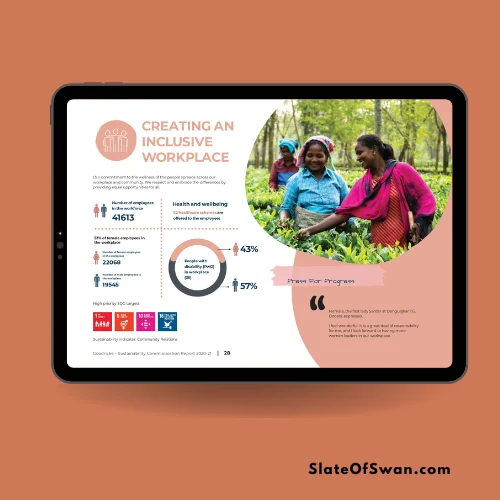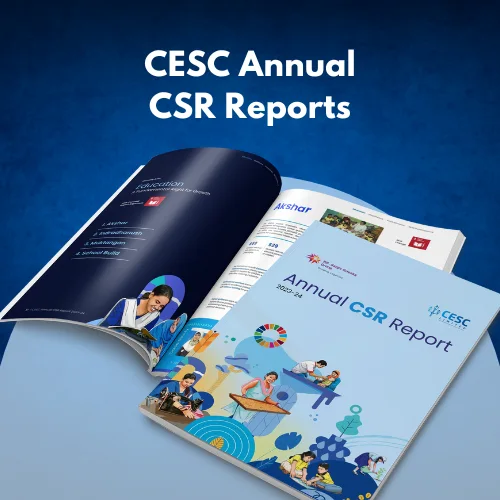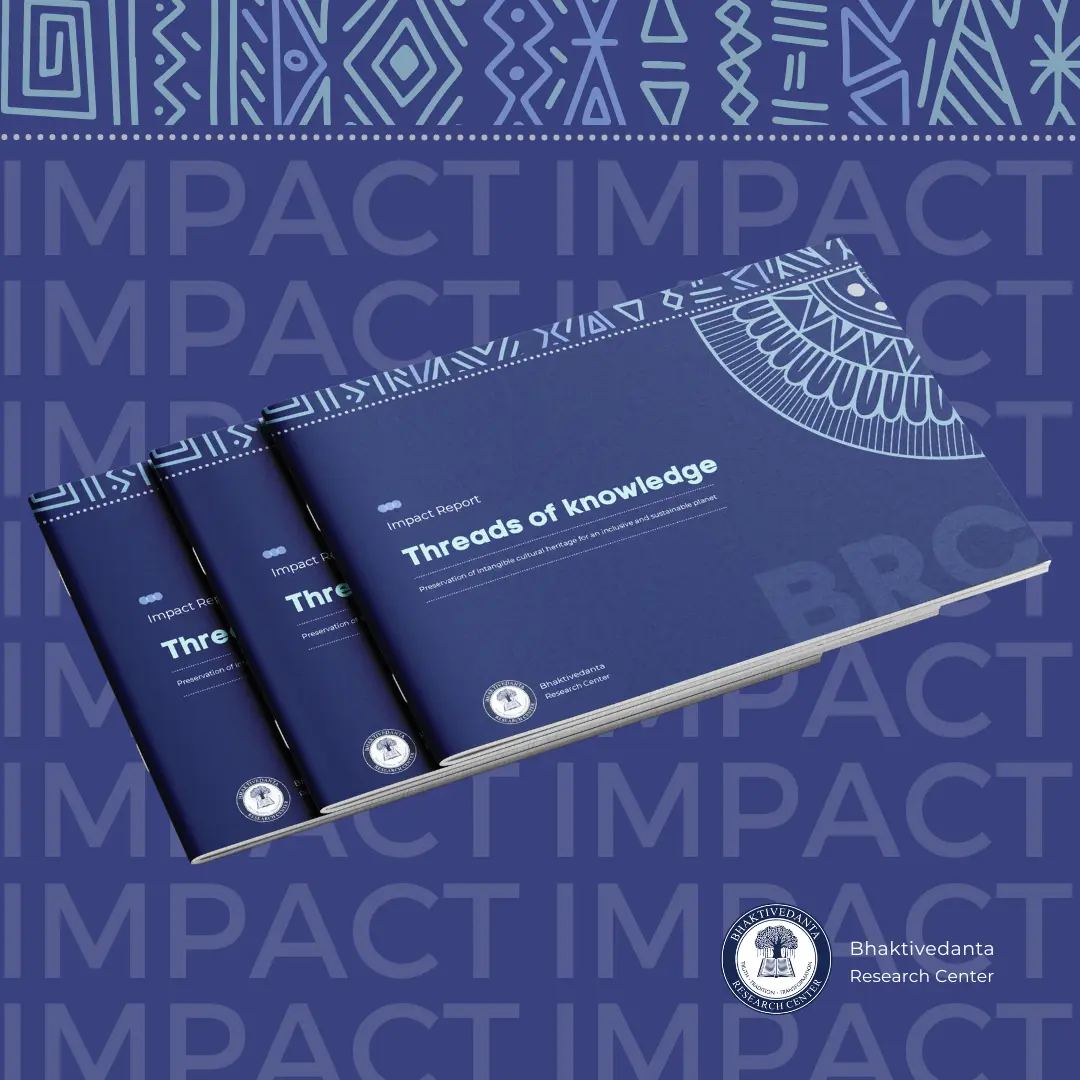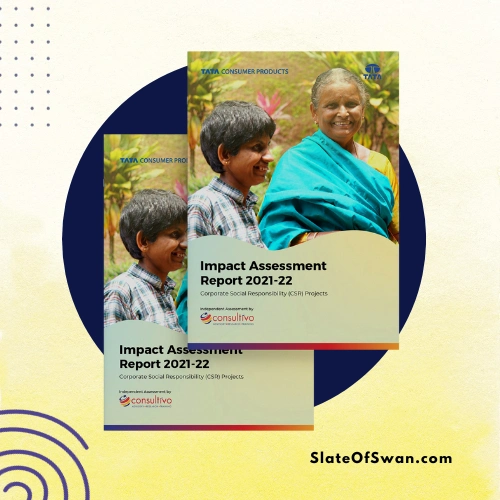Sustainability Report Writing: Learn to craft impactful ESG reports with our comprehensive guide and drive positive change
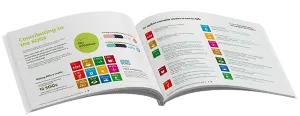
Sustainability Report Writing, or ESG Report Writing, presents a unique challenge. Crafting narratives that resonate and drive positive impact for stakeholders can be even more daunting. In this guide, we’ll navigate through strategies to conquer these challenges and create compelling reports that inspire action and change.
Every organization’s path in sustainability reporting is unique.
Whether focusing on climate risks, biodiversity, SDGs, or SASB, and whether tracking 10 or 100 metrics, a successful approach adheres to reporting regulations, faithfully portrays material environmental and social impacts, and aptly outlines the integration of ESG risks and opportunities in the business strategy.
In today’s world, the importance of sustainability cannot be overlooked. Organizations of all sizes are recognizing the need to embrace sustainable practices and communicate their efforts effectively. Writing impactful reports is a powerful way to showcase these sustainability initiatives and engage stakeholders.
We will explore the key elements that make a report stand out, from setting clear objectives to presenting data in a compelling manner. Whether you are a seasoned sustainability professional or just starting out, this guide will equip you with the knowledge and skills to unlock the full potential of sustainability reporting.
Through this guide, you will learn how to craft reports that not only inform but also inspire, driving positive change within your organization and beyond.
Join us on this journey as we delve into the world of sustainability reporting and discover the true power it holds to drive meaningful impact.
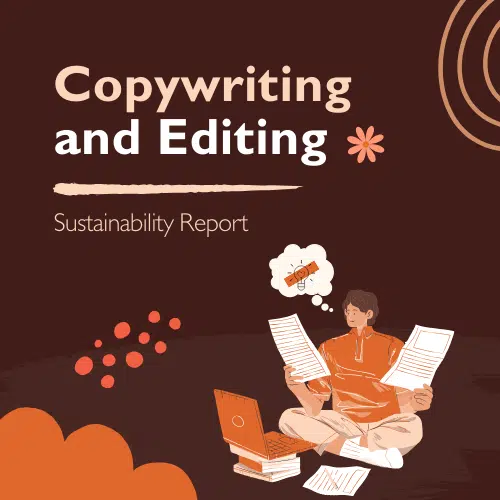
What is Sustainability Reporting?

Sustainability reporting is the practice of measuring, disclosing, and being accountable for an organization’s environmental, social, and economic impact. It involves collecting and analyzing data on various sustainability indicators and presenting the findings in a structured report.
These reports provide stakeholders with a comprehensive view of an organization’s sustainability performance and enable them to make informed decisions.
The Importance of Sustainability and ESG Reporting
Sustainability reporting is a crucial tool for organizations to transparently communicate their sustainability efforts and their commitment to environmental, social, and governance (ESG) performance.
It goes beyond mere compliance with regulations and serves as a means to showcase the organization’s sustainability goals, progress, and impact.
Benefits of Impactful ESG or Sustainability Report Writing
Writing impactful sustainability reports offers numerous benefits for organizations. Firstly, it enhances their reputation and credibility among stakeholders, including investors, customers, employees, and the community.
By transparently sharing their sustainability efforts and progress, organizations build trust and can attract more socially conscious investors and customers.
Moreover, impactful sustainability reports can help organizations identify areas for improvement and set meaningful sustainability goals. By analyzing data and trends, organizations gain insights into their environmental and social impact, enabling them to make informed decisions that drive positive change.
Additionally, sustainability reporting can lead to cost savings and operational efficiencies by identifying opportunities to reduce waste, energy consumption, and other resources.
Craft reports that captivate and inspire! 🚀 Partner with Slate of Swan – a trusted expert in ESG Report Design, Annual Report Design, and CSR Report Design to elevate your corporate storytelling.
Key Components of Impactful Sustainability and ESG Report Writing

1. Setting Clear Objectives for Sustainability Report Writing
2. Conducting a materiality assessment
- Stakeholder Engagement: Engage with stakeholders, including employees, customers, investors, NGOs, and local communities. Identify their concerns, expectations, and areas of interest regarding sustainability.
- Identify Relevant Topics: List potential sustainability topics (e.g., carbon emissions, community engagement) based on industry standards (GRI, SASB), global goals (SDGs), and stakeholder inputs.
- Impact Analysis: Assess the potential positive and negative impacts of each topic on the environment, society, and the business. Consider direct and indirect effects throughout the value chain.
- Business Relevance: Evaluate the significance of each topic to your organization’s strategy, operations, and value creation. Consider risks, opportunities, and potential competitive advantage.
- Materiality Matrix: Create a matrix plotting impact against business relevance. Prioritize topics that fall into the high impact, high relevance quadrant.
- Validation: Seek internal and external input to validate the matrix. Ensure alignment with senior management, sustainability experts, and stakeholders.
- Data Collection: Collect relevant data for the identified material topics. Use quantitative and qualitative information to measure performance and impacts.
- Reporting Boundaries: Define reporting boundaries (e.g., geographical scope, subsidiaries) for each topic. Be transparent about what’s included and excluded.
- Set Targets: Establish specific, measurable targets for material topics, aligned with industry benchmarks, regulatory requirements, and stakeholder expectations.
- Narrative and Context: Provide context for each material topic. Explain the rationale behind its selection, its relevance to stakeholders and strategy, and the efforts to address it.
- Case Studies: Include real-life case studies and examples that demonstrate the positive impact of your sustainability initiatives on the selected material topics.
- Future Outlook: Discuss the anticipated evolution of material topics, considering emerging trends, technological advancements, and changing stakeholder expectations.
- Clear Communication: Craft a narrative that communicates the organization’s commitment, progress, challenges, and plans regarding material topics. Use simple language and engaging visuals.
- GRI/SASB Alignment: Structure your reporting according to recognized frameworks like Global Reporting Initiative (GRI) or Sustainability Accounting Standards Board (SASB) to enhance credibility and comparability.
- Feedback Loop: Encourage feedback from stakeholders on the materiality assessment and reporting. Show responsiveness to suggestions and demonstrate a commitment to continuous improvement.
3. Conducting Research and Gathering Data for Sustainability or ESG Report Writing
To create an impactful sustainability report, thorough research and data collection are necessary. This involves gathering relevant information on the organization’s sustainability initiatives, performance indicators, and progress.
Data can be collected from internal sources, such as operational records, employee surveys, and financial reports, as well as external sources like industry benchmarks and third-party certifications.
4. Crafting a Clear and Compelling Vision Statement
A vision statement sets the tone for the sustainability report and articulates the organization’s long-term sustainability goals and aspirations. It should inspire stakeholders and convey the organization’s commitment to sustainable practices.
A clear and compelling vision statement creates a sense of purpose and direction for the report, ensuring its impact on readers.
5. Analyzing and Interpreting Sustainability Data - Insightful inputs for Sustainability and ESG Report Writing
Data analysis is a critical component of impactful sustainability reports. It involves interpreting the collected data, identifying trends, and drawing meaningful conclusions.
Data visualization techniques, such as graphs and charts, can be used to present complex information in a clear and understandable manner. This allows stakeholders to grasp the organization’s sustainability performance easily.
6. Presenting Findings and Recommendations Effectively through ESG or Sustainability Report Writing
Presenting the findings and recommendations in a clear and compelling manner is crucial for engaging stakeholders.
The report should highlight the organization’s achievements, challenges, and future goals, while also addressing any gaps or areas for improvement. Recommendations should be actionable and focused on driving positive change.
7. Writing a sustainability & ESG report in simple and communicative language
Accessibility
- Wider Audience: Sustainability reports are read by various stakeholders: investors, employees, customers, NGOs, governments. Simple language ensures everyone can understand.
- Non-Experts: Many readers might not have a deep understanding of sustainability jargon. Using simple terms makes the content accessible to all.
Clarity
- Clear Understanding: Complex language can lead to confusion and misinterpretation. Simple language ensures your message is understood without ambiguity.
- Transparency: Clarity helps to provide a transparent account of your organization’s sustainability efforts, enhancing trust.
Engagement
- Maintain Interest: Simple language keeps readers engaged, preventing them from getting overwhelmed or bored.
- Storytelling: Communicative language allows for storytelling, making the report more relatable and memorable.
Stakeholder Alignment
- Consistent Interpretation: Simple language minimizes the risk of stakeholders interpreting the information differently.
- Alignment: When stakeholders easily grasp your sustainability goals, they’re more likely to align with your organization’s mission.
Credibility
Avoid Greenwashing: Simple language prevents the use of vague, grandiose terms that might sound good but lack substance.
Preventing greenwashing in sustainability reports is essential to maintain transparency, trust, and credibility
A. Honest Assessment
Conduct a thorough assessment of your organization’s sustainability practices. Be aware of your actual environmental impact and areas needing improvement.
B. Clear Messaging
Use precise language to describe your initiatives. Avoid vague or ambiguous terms that can be misconstrued.
C. Back Claims with Evidence
Provide concrete data, metrics, and performance indicators to support your sustainability claims.
D. Contextualize Achievements
Present achievements within the context of your overall sustainability journey. Highlight progress made over time.
E. Avoid Overstatement
Be cautious about making overly positive claims without sufficient evidence. Avoid absolutes like “100% eco-friendly.”
F. Third-Party Verification
Seek third-party certifications or audits to validate your claims. Independent verification adds credibility.
G. Balanced Reporting
Include both successes and challenges in your report. This shows authenticity and a commitment to continuous improvement.
H. Address Weaknesses
Be transparent about areas where your organization falls short in sustainability efforts. Outline plans for improvement.
I. Materiality Assessment
Prioritize reporting on issues that are truly material to your organization and stakeholders. This avoids diverting attention from significant concerns.
J. Consistency in Communication
Ensure that your sustainability message is consistent across various platforms—website, marketing materials, and reports.
K. Avoid Cherry-Picking
Don’t highlight only the most positive aspects of your sustainability initiatives while ignoring other less favorable aspects.
L. Educate Stakeholders
Educate stakeholders about your sustainability initiatives, goals, and challenges. Informed stakeholders are less likely to fall for misleading claims.
M. Address Criticism
Be open to criticism and questions from stakeholders. Respond honestly and openly to address concerns.
N. Engage with Experts
Consult sustainability professionals, NGOs, and experts to ensure your reporting aligns with industry standards and best practices.
O. Transparency About Limitations
Clearly state the limitations of your sustainability efforts. Acknowledge areas where you lack data or where progress is slower.
By adhering to these principles and practices, you can create a sustainability report that is credible, transparent, and reflective of your organization’s genuine commitment to sustainability, thus preventing greenwashing.
Craft reports that resonate and create confidence! 🚀 Partner with Slate of Swan – a trusted expert in ESG Report Design, Annual Reports Design, and CSR Annual Report Design to elevate your corporate storytelling.
Actionable Insights
Call to Action: Communicative language helps readers understand their role in contributing to sustainability goals, promoting actionable outcomes.
Learning: Clear language ensures that readers can learn from your experiences and apply lessons to their own endeavors.
Simple and Communicative Language for Sustainability Report Writing
- Avoid Jargon: Replace technical terms with plain language. If jargon is necessary, provide simple explanations.
- Use Analogies: Explain complex concepts using relatable analogies that everyone can understand.
- Short Sentences: Break down complex ideas into concise, straightforward sentences.
- Active Voice: Use active voice to make the writing more direct and engaging.
- Visual Aids: Incorporate visuals like graphs, charts, and infographics to simplify data presentation.
- Headings and Bullets: Organize information using clear headings and bullet points. This aids scanning and understanding.
- Real-Life Examples: Share relatable case studies or real-world examples to illustrate your points.
- Engaging Tone: Write in a friendly, conversational tone to create a connection with the reader.
- Review and Feedback: Have non-experts review the report and provide feedback on its clarity and readability.
- Language Tools: Use readability checkers and tools like Flesch-Kincaid score to gauge the simplicity of your writing.
Writing an Executive Summary
Tips for Engaging Stakeholders through Sustainability Reporting

To maximize the impact of sustainability reports, it is essential to engage stakeholders effectively.
This can be achieved through various strategies, such as involving stakeholders in the report’s development, using storytelling techniques to make the sustainability report design relatable, and providing opportunities for feedback and dialogue. Engaging stakeholders builds trust, encourages dialogue, and fosters a sense of shared responsibility.
Best Practices for Creating Visually Appealing Sustainability Reports

Visual appeal plays a significant role in capturing stakeholders’ attention and making the sustainability report more engaging. Using infographics, images, and colors strategically can enhance the report’s readability and comprehension.
Additionally, incorporating a consistent design theme and layout throughout the report creates a cohesive and professional look.
Tools and Resources for Writing Impactful Sustainability or ESG Reports

Various tools and resources are available to assist organizations in writing impactful sustainability reports. These include sustainability reporting frameworks, such as the Global Reporting Initiative (GRI) and the Sustainability Accounting Standards Board (SASB), which provide guidelines and indicators for reporting on different sustainability topics.
Additionally, software platforms and templates can streamline the process of data collection, analysis, and report creation.
Conclusion

Writing impactful sustainability reports is a powerful way for organizations to showcase their sustainability initiatives and engage stakeholders. By following the step-by-step process outlined in this comprehensive guide, you can unlock the full potential of sustainability reporting.
From setting clear objectives to presenting data in a compelling manner, this guide equips you with the knowledge and skills to drive meaningful impact within your organization and beyond.
Embrace sustainability reporting as a tool for positive change, and together, we can create a more sustainable future.
- Understand stakeholder expectations clearly using stakeholder materiality assessments. This is the cornerstone of your business strategy and helps you to prioritize your focus.
- Determine strategic enablers against key ESG topics and define key metrics, considering forthcoming regulations.
- Develop a governance structure to collect, report and approve sustainability and ESG information. Define accountability for each information.
- Consider investing in quality data management, including process documentation with key performance indicators, traceability, verification over the information, or efficacy parameters of system implementation.
Share this post

